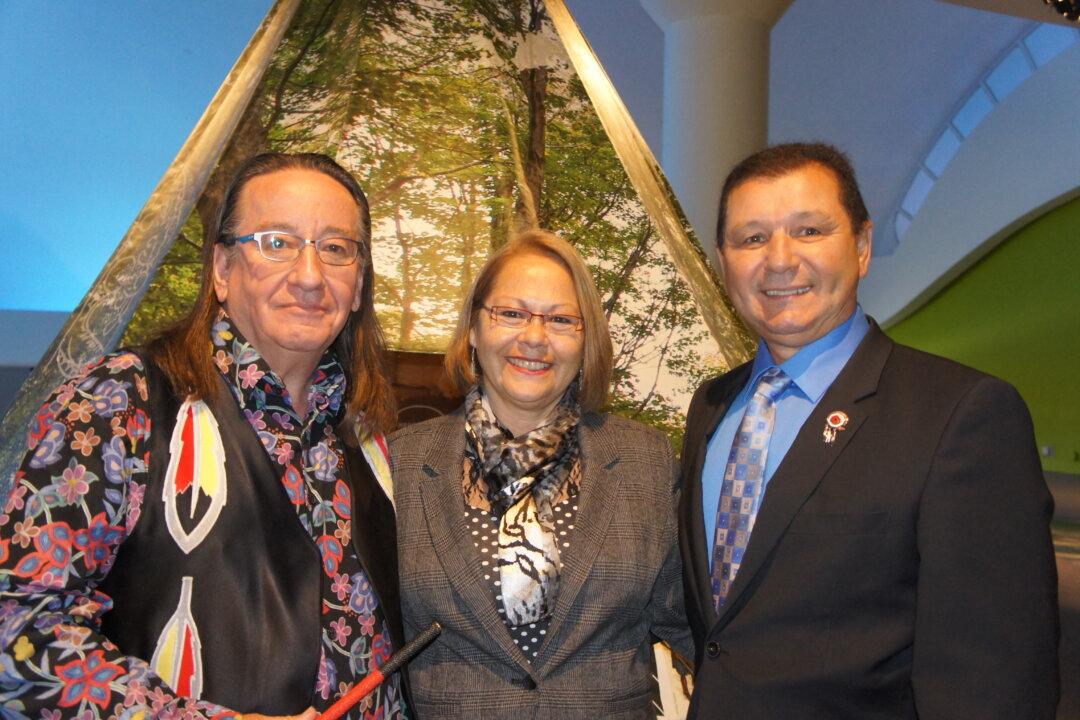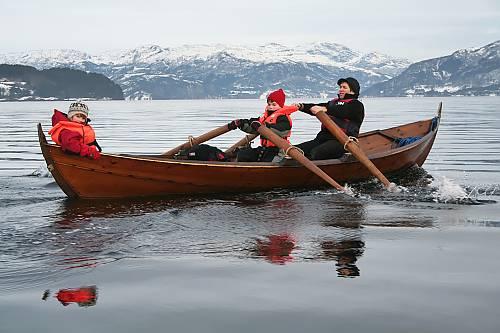A new exhibition at the Canadian Museum of History in Gatineau explores the living history and traditional stories of the Mi'kmaq people of Prince Edward Island.
At the opening of the exhibit on Oct. 10, Chief Albert Whiteduck formally welcomed representatives of Prince Edward Island’s Mi'kmaq First Nation, saying: “I welcome you on unceded, unsurrendered lands for which there is no treaty, located in our sacred Anishinabeg land.”
Chief Whiteduck, Kitigan Zibi Anishinabeg, (Algonquin) and the museum’s director general Jean-Marc Blais agreed that a great deal of what is now Canada’s capital and neighbouring Gatineau are on Algonquin territory.
Brian Francis, Chief of the Abegweit First Nation, and Matilda Ramjattan, Chief of Lennox Island First Nation, were at the opening to celebrate what is an historic event.
“We like to share our history and our culture with our people and with others,” Chief Francis said.
The Mi‘kmaq phrase Ni’n na L‘nu, meaning “I am one of the people,” is the aboriginal name for the exhibition. The English title is “The Mi’kmaq of Prince Edward Island.”
According to museum notes, the Mi‘kmaq history and culture goes back more than 12,000 years. Five wigwam-like structures present evocative images and texts as well as audio elements revealing Mi’kmaq stories and age-old memories.
Some might suggest, as a 2003 story by Stefan Lovgren for National Geographic News does, that the first Americans “may not have been the ancestors of today’s Amerindians, but another people who came from Southeast Asia and the southern Pacific area.”
Traditionally, Native Americans are thought to have descended from northeast Asia, “arriving over a land bridge between Siberia and Alaska some 12,000 years ago,” Lovgren wrote. Were they the first to arrive in the Americas?
A recent study of skulls excavated in Baja, California, suggests the skulls came from a settlement of Southeast Asians who occupied Australia 60,000 years ago and then “expanded into the Americas about 13,500 years ago,” before Mongoloid people started arriving from northeast Asia.
According to a study reported in the science journal Nature, Rolando Gonzalez-Jose of the University of Barcelona holds that the “settlement of the New World is better explained by considering a continuous influx of people from Asia.”
Lasting Contributions
The exhibition, which will travel to other museums across Canada, reveals the living history and traditional stories of P.E.I. Mi'kmaq, including legends, oral traditions, and the knowledge of elders in the fields of politics, alliances, and conflicts.
According to museum notes, the exhibit portrays the history of the Mi'kmaq of Epekwitk (Prince Edward Island) from the most “ancient archaeological records to the present day.” Material culture and archaeology as well as language and the arts are investigated.
“The unveiling of this impressive travelling exhibition warms my heart, not only because I am Mi‘kmaq, but also because I know it will ensure that thousands of people will have the opportunity to share, understand, and appreciate the lasting contributions of P.E.I. Mi’kmaq,” said Chief Ramjattan.
Visitors enter five wigwams traditionally made from birch bark, each one devoted to a different theme. The themes are explored through a combination of impressive visual material, including “many ‘hidden’ objects that visitors can touch and learn from, and a sound experience that unfolds inside each wigwam,” according to a museum press release.
The exhibition will be on view until Jan. 18, 2015. For more information, visit: www.historymuseum.ca
Susan Hallett is an award-winning writer and editor who has written for The Beaver, The Globe & Mail, Wine Tidings and Doctor’s Review, among others. Email: [email protected]





